Maurice Emmanuel: Chamber Music and Songs
These three early works of the French composer Maurice Emmanuel (1862-1938) show him emerging from the influence of César Franck to find an individual voice, with an ambitious violin sonata (here receiving its first recording), a suite of arrangements of Greek folksongs, wiry and winsome by turn, and an atmospheric, large-scale song-cycle to texts by the poet, geologist and historian Louis de Launay — a polymath like Emmanuel himself.
Frédéric Angleraux, violin
Hélène Hébrard, mezzo soprano
François Killian, piano
Listen To This Recording:
-
Violin Sonata in D minor, Op. 6 (1902)
- I Allegro moderato
- II Adagio non troppo
- III Allegro giocoso ma non troppo vivace
- I Khasarikos: Allegretto moderato
- II Mamaro et Amadès: Allegretto
- III Pyrghi: Allegro ma non troppo
- IV Boulgarikos: Allegro energico
- I Prélude (Andante)
- II ‘Vibrations’ (Adagio)
- III ‘Le vieux coucou’ (Allegretto)
- IV ‘Sous les pins’ (Moderato ma energico)
- V ‘Résonnances’ (Andante)
- VI ‘Invitation à la valse’ (Tempo di walzer, ma moderato)
- VII ‘Villanelle du temps passé(Allegretto scherzando)
- VIII ‘Berceuse’ (Andante con moto, espressivo)
- IX ‘Marche au bonheur’ (Allegro)
- X ‘Valse hongroise’ (Andantino)
- XI ‘Des mots! des mots!’ (Allegro jocoso)
- XII Postlude (Moderato)
Suite sur des airs populaires grecs, Op. 10 (1907)
Musiques, Op. 17 (1908)
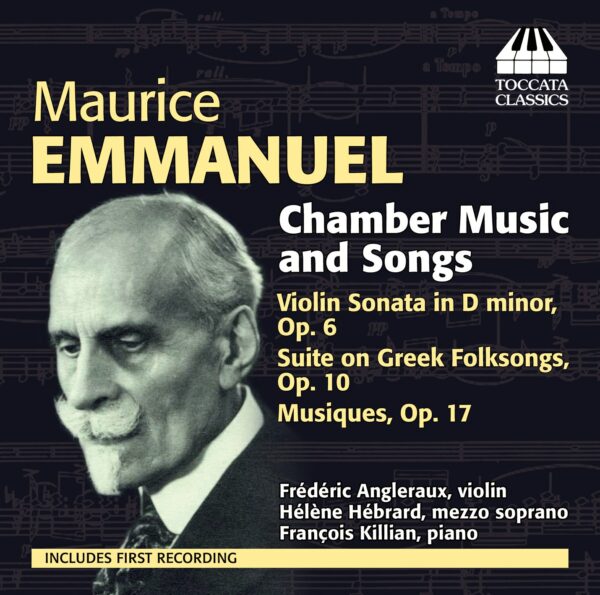
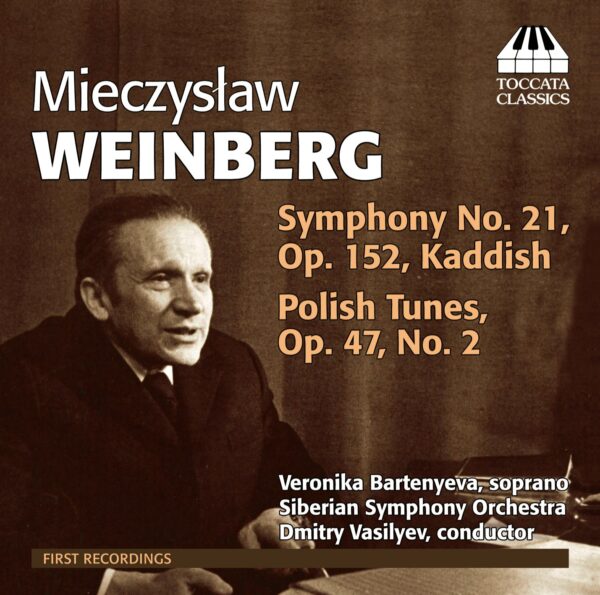
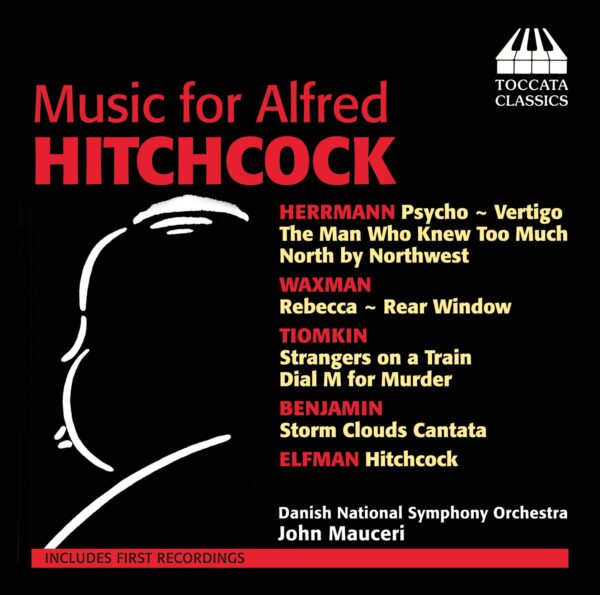
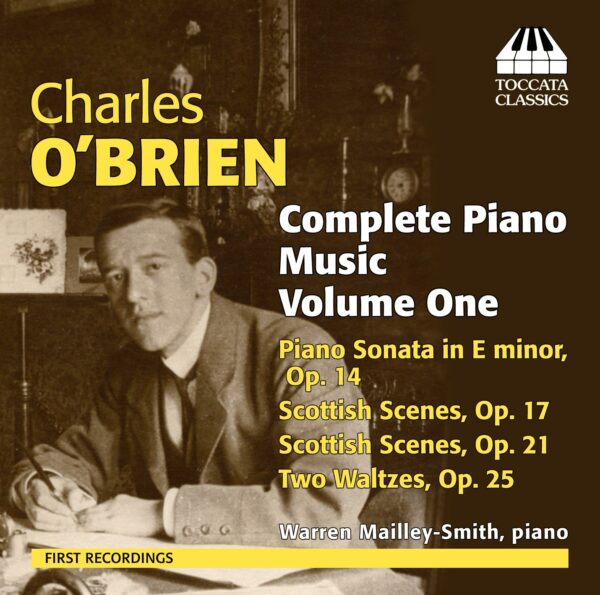
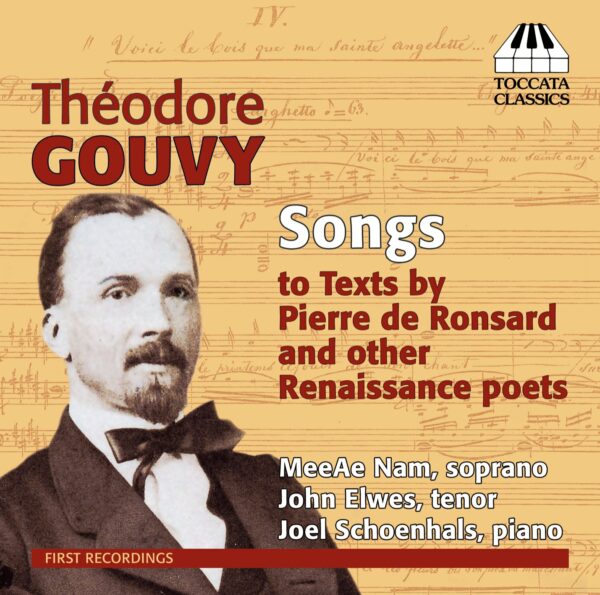
MusicWeb International :
‘Maurice Emmanuel was a contemporary of Debussy and Dukas but his interests in folk music, the Classical age and musical experimentation make him unique. …The Violin Sonata is quite Franckian in many ways, but in the breadth of its themes, unique use of modality and occasional playfulness are evidence of a composer with his own voice. …His Musiques is a set of twelve poems evocative of musical forms written against the background of the Great War. While full of contrast the poems share an austerity appropriate to the times. This last element is foremost in Emmanuel’s settings but combined with great beauty of line and a certain tenderness. …Frédéric Angleraux and Francois Killian turn in powerful performances of both the violin works. Angleraux’s tone and attack are just right for the music and Killian is equally good in the complex accompaniments. Killian is even more subtle in Musiques showing a true understanding of both poetry and music. He is matched by Hélène Hébrard whose performance is full of insight combined with complete mastery of the cycle’s vocal demands. While Emmanuel remains something of a cult figure his music is very well-represented on disc.’
—William Kreindler, MusicWeb International
Fanfare Magazine :
‘…This intelligently programmed mixture of instrumental and vocal music adds to the picture, which is that of an important musician not at all deserving of the neglect with which the music industry has saddled him. …His music has influences, to be sure, from his predecessors and contemporaries (Debussy, Ravel, Fauré, and Franck all shaped him), but he was his own man, and as one listens more and more one hears Emmanuel’s voice (and one also hears the influence that he had on Messiaen in particular). He was interested in the music of the East, in ancient and Eastern modes, and in folk music. …The violin sonata is the earliest work here, dating from 1902, and in some ways the most traditional, with a particularly lovely slow movement. But his use of chromaticism in, for example, the transition between the second and third movements is quite original, as is the slow and lovely interruption of momentum in that finale. This work would find a welcome place in the repertoire of any violinist who is sympathetic to the Franck Sonata, and would please any listener who enjoys that work. …[Musiques] is more adventurous than the earlier works. This is darker, more inward-looking music, appropriate for the atmosphere during the war… The piano writing is dramatic and strong, not at all a mere accompaniment to the singer, and the vocal line goes from lyrical and gentle to intense and declamatory. Emmanuel’s interest in exotic modes and the use of chromaticism as an expressive device are given full rein in this half-hour cycle.’
—Henry Fogel, Fanfare Magazine
Classica :
‘En trouvant d’instinct le tempo giusto leur permettant de ceseler la rondeur et la beauté du timbre, les interprètes nous font partager leur enthousiasme pour ces pages de haute tenue, si injustement délaissés.’
—Michel Flaury, Classica, July 2014